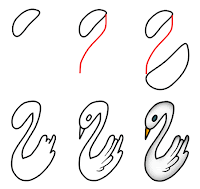Toys make amazing rewards that can encourage kids to behave. Toys can be used to encourage general good behavior or you can use them to teach manners, stop phone interruptions and more.
The power of kid’s toys is utterly amazing when you start using them as leverage for positive behavior.
How Kid’s Toys can Encourage Overall Good Behavior?
Get three of anything. It can be three pennies, three rocks, three trivial toys etc… Put the three items in a drawer. Put your child’s name on a plastic cup. When you see your child doing something good like using manners, treating his sibling nice or more then place one of the three items in your child’s cup.
Tell your child that he earned 1 point for his good behavior and compliment him on a job well done! Let him know that if he earns 3 points that day that you will play with him and his favorite toy at the end of the day. Now if you find that it’s too easy for your child to earn 3 points consider bumping it up to 5 or more. When play time arrives, count up the points and if he’s earned the right quantity let him go and get his favorite toy of the day and play with him for at least 30 minutes. You’ll find that doing this will improve your child’s behavior very quickly and once he learns that you’ll play “his way” for 30 minutes he’ll be very determined to earn those points every day!
Using Kid’s Toys to Teach Manners
If your child has a favorite stuffed animal or doll then you’re in luck! You can use his furry friends to help teach him good manners. You’ll first need to write down a list of manners that you want your child to learn. Do you want to teach him table manners and help him learn to say please and thank you often? Do you want him to know how to address adults like Mrs. Smith instead of using first names? Do you want to teach him how to say hello and goodbye on the phone and in person? What you teach your child is up to you, but it’s a good idea to write a list and practice often till it sinks in.
To teach table manners, have your child bring is favorite stuffed animal or doll to dinner. Ask him how his doll should be sitting and have him place his doll in the appropriate sitting position. Then ask your child to do as doll does. Then ask him to tell you what his doll should do if he wants to talk, but has a mouth full of food. Use his doll as an example for every table manner you want to teach your child. You can even have him place a napkin on dolly’s lap. You could have your child roll play his “inside” voice talking through his doll and even talk about how dolly could use his manners at a restaurant.
Later, go to the family room and have your child and doll sit on the couch. Have your child tell you how dolly can use the words please and thank you throughout the day. Roll play with the doll. Encourage your child to have fun with the roll plays to really “show off” his knowledge of good manners. Let him add lib and make things up and ask him to have dolly show you all the good manners that he has. This can be very fun, as well as, quite educational and effective at teaching manners.
Using Kid’s Toys to Stop Phone Interruptions
Everyone has been on the phone and had their child run up making tons of non-stop noise! This is annoying for mom and annoying to the caller, but it can be prevented by simply creating a phone call kid’s toy box. First step is to get a box. You can choose a pretty basket or plastic bin depending on where you want to keep the container. Get a box that’s big enough to fit 2 or 3 kid’s toys. Then you’ll want to choose some toys to put in it. I’d advocate choosing toys that encourage long-time play such as: blocks, pretend play toys, puzzles or anything else that will keep your child’s attention.
Talk with your child about the importance of not interrupting you while you’re on the phone. Let him know that he now has a special “phone toy box” that can only be opened when you’re on a phone call. Show him the box and the special toys inside. Tell him that every time you’re on the phone he can play with those toys. Let him know that if he’s really good you’ll let him choose some new toys every 2, 4 or 6 months (depending on what you decide and your budget) that he can put in his phone toy box.
If he’s quiet while you’re on the phone then he can keep playing with his special toys until the call is over. If he interrupts, then the toys go back up on the shelf straightaway. If he needs to tell you something “important” you can practice teaching him how to interrupt the nice way. Have him walk over to you and place his hand on your arm or knee and wait till you excuse yourself from the call. Teach him not make noise as he approaches.
As you start using toys as rewards you’ll ascertain how much fun it can be to teach your child good behavior without having to use negative consequences. These techniques are a win/win for you and your child because each of you will get what you want in the end!
Author: Kim Proulx, a Certified Parent Coach.







